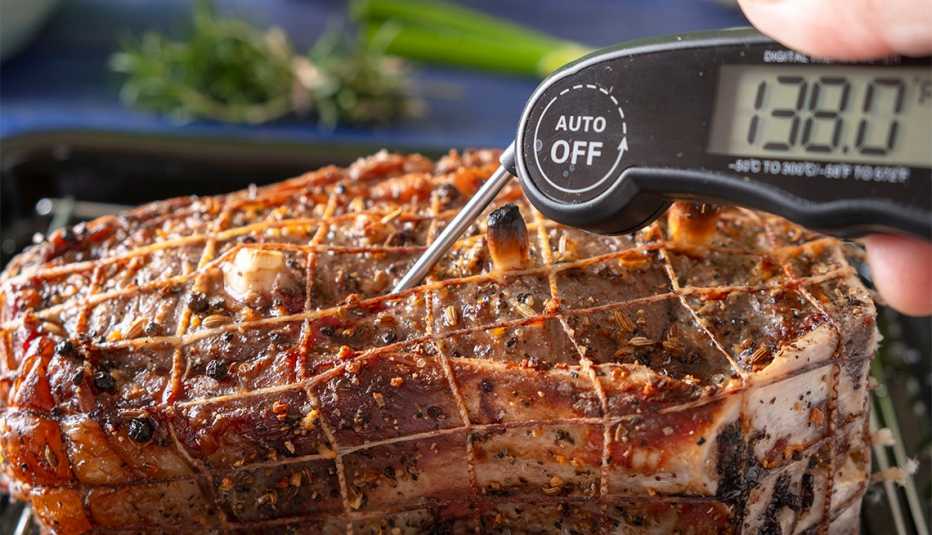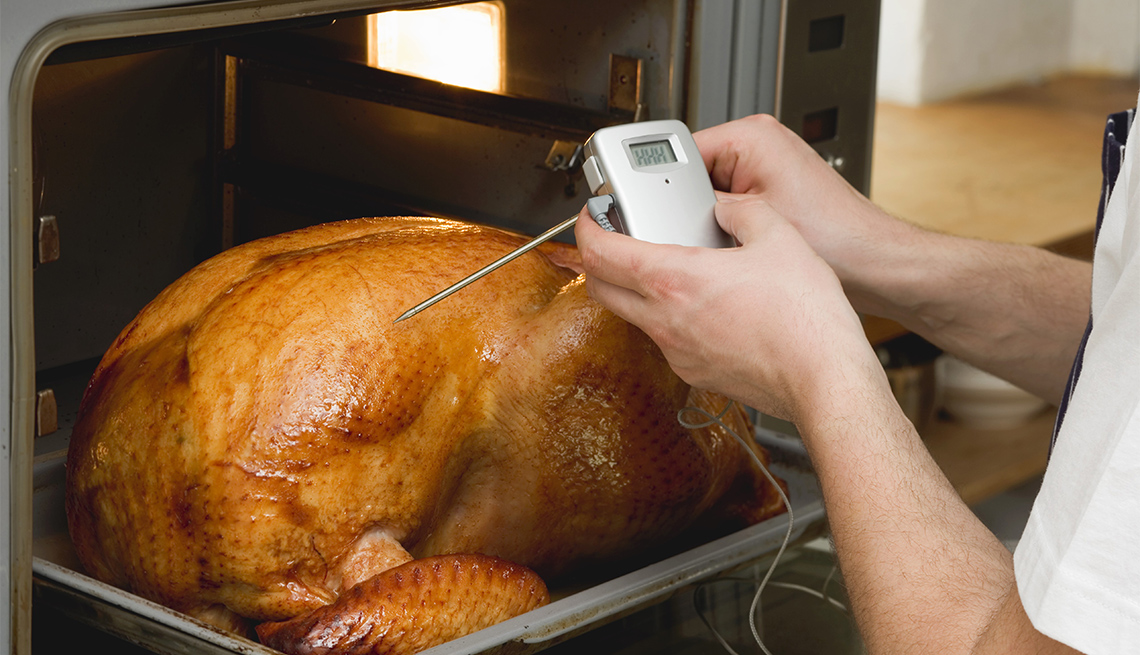AARP Hearing Center
When it comes to important kitchen tools, a meat thermometer tops the list. It measures the internal temperature of cooked meat so you can determine whether it’s safe to eat. But it can also help you avoid that dry turkey breast or a steak that’s too rare, and help you get your meat to match your personal preference and tastes.
But with so many kinds of meat thermometers on the market, it’s hard to know exactly which one to buy and how to use it. Here’s what you need to know about this essential kitchen tool.
Prevent food poisoning
One in 6 people suffer food poisoning each year, according to the Centers for Disease Control and Prevention.
According to FoodSafety.gov, adults 65 and older are more likely to be hospitalized or die from foodborne illnesses like salmonella and E. coli. Food poisoning can cause vomiting, diarrhea and even kidney failure.


How to Cook Meat at a Proper Temperature
Here is the safe meat thermometer-read temperature for each cut of meat:
- Roasts, steaks and chops: Beef, pork, veal and lamb should be cooked until the internal temperature reaches 145°F, with a three-minute “rest time” after removal from the heat source.
- Ground meats: 160°F
- Poultry: Whole, parts or ground poultry should be at 165°F.
- Leftovers: Heat leftovers thoroughly to 165°F.
- Meat substitutes: Plant-based foods should be cooked according to package instructions.
- Eggs and egg dishes: Cook eggs and egg-based dishes to 160°F.
- Fish: Cook fish to 145°F. The fish should be opaque and separate easily with a fork.
Credit: Partnership for Food Safety Education
A meat thermometer can help make sure you serve your guests meat that’s been cooked to a safe enough temperature to kill bacteria. That’s a big step in preventing foodborne illness.
Maybe you’ve just always cut into the middle of your roast to check whether it looks done. You might want to think again about that practice, says Britanny Saunier, executive director of the Partnership for Food Safety Education, a public health nonprofit dedicated to helping U.S. households understand how to handle food safely.
“Looking at color and texture is not a reliable way to tell if food is safe to eat or ‘done,’” Saunier says. “Factors such as lighting can influence the look of your food, so sight is not a reliable indicator.”
Case in point: 1 out of every 4 hamburgers turn brown before reaching a safe internal temperature according to the U.S. Department of Agriculture.
Safe temperatures vary by item (see chart below), but they generally fall between 145 degrees for roasts and chops, plus a resting period where the temperature continues to increase, and 165 degrees for poultry. A meat thermometer is the best way to determine the temperature of your food.






































































